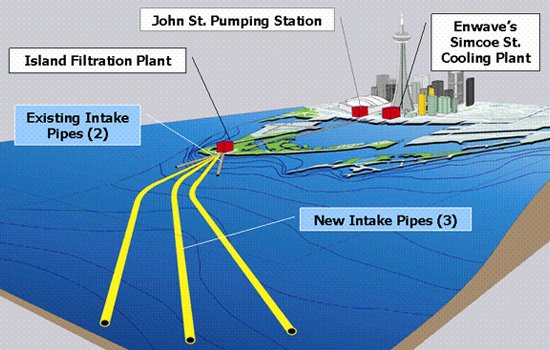
Many of Toronto’s hospitals, data centres, educational campuses, government buildings, and commercial and residential buildings use the Deep Lake Water Cooling (DLWC) system, which is very good at keeping the air in these places cool and refreshing.
People don’t have to be very smart to figure out how the technology works. Instead of using energy-consuming compressors and chillers, Deep Lake Water Cooling uses water from nearby Lake Ontario to get rid of heat. It is a system that is long-term, low-carbon, and energy-sharing.

Connecting to the network can save water and money, make energy costs more predictable, and make buildings more resilient. In addition, the system is good for the environment because it takes 55 MW of electricity from Toronto’s electricity grid every year.
The deep lake water cooling results in less energy use and a lot less water use than other sources. The system is so good that it saves the city 90,000 mega-watt hours of electricity each year, which is enough to power a town of 25,000 people.
It’s expected that 30% of the city’s floor space will be heated and cooled by low-carbon sources by the year 2050. Enwave is the company that owns and runs the DLWC systems in Toronto. They share infrastructure with the City of Toronto’s water utility.

A lot of commercial water-cooling systems use towers that make water evaporate as a way to get rid of heat. DLWC stops the water from evaporating, and Enwave estimates that the Toronto system saves about 220 million gallons of water each year, which is enough to fill 350 Olympic-sized swimming pools.
Reference- Enwave website & PR, Toronto.ca website, Clean Technica, Community Research Connections, The Washington Post






